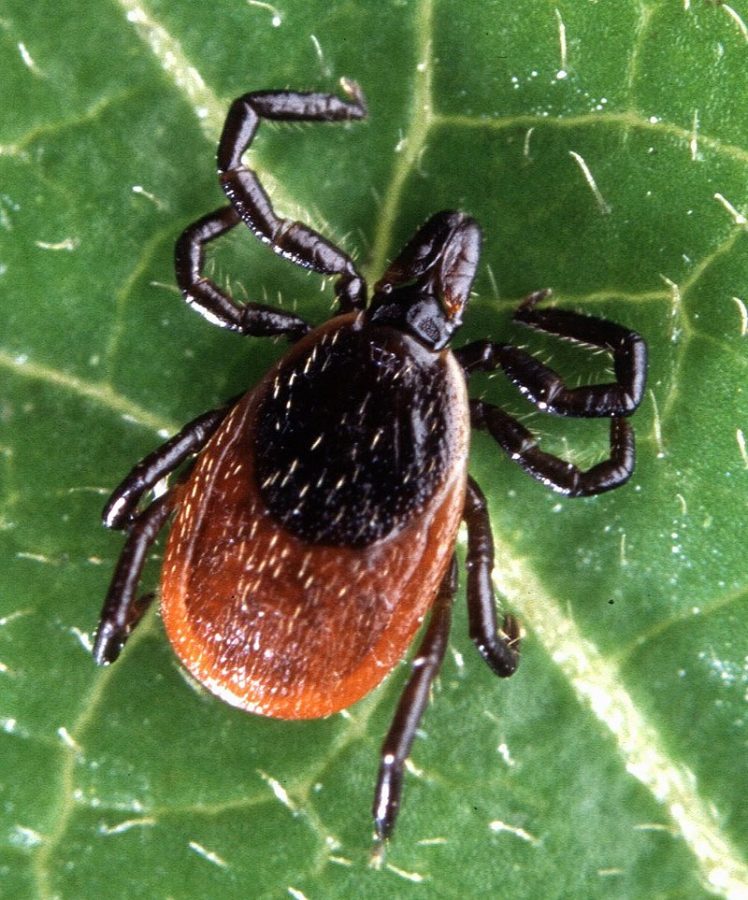Why ticks make us sick
May 24, 2019
Tick season has arrived, and with over 800 species of ticks, things can get pretty gross. Here is why Weird Science is grossed out by ticks.
First, ticks spread bacterial as well as viral diseases. Among the various diseases are powassan virus disease, a potentially fatal disease which can only be transmitted by ticks that carry the virus; furthermore, the tick must be attached to the individual for a certain amount of time (typically 12-24 hours) to transmit the disease. They also transmit Anaplasmosis, caused by the bacterium Anaplasma, and Lyme Disease. Lyme Disease is most common, with more than 30,000 cases in humans each year and is caused by a borrelia bacteria. Pets are also susceptible to tick-borne diseases. Even more concerning is the fact that these diseases can still be transmitted after the tick is killed. The ticks spread their disease if they are not disposed of correctly. If the insect is squished by between two fingers, the disease can still be contracted.
Secondly, ticks can live while submerged underwater. Although ticks can’t swim, they can survive underwater for two to three days. This makes them harder to get rid of when compared to other insects. For instance, if ticks are on one’s clothes, they can survive a trip through the washing machine. This is dangerous because it means they will be able to linger and crawl around the house and potentially infect a human or pet. When returning from outside, always make sure to do a thorough tick check before entering the house.
The anatomy of a tick is also disturbing. Ticks have a total of eight legs as opposed to the typical six that insects usually have. They also have three body segments and are very flat which gives them the ability to a easily stick onto people and animals. They also have a harpoon-shaped structure called a hypostome which is used to pierce the skin and then push into a vein to feed on the host. Hypostomes are also used by males to fertilize females.
Next, they expand when they consume blood. After ticks inject their hypostomes into a vein, they feed off of the host’s blood. When completely filled, ticks can reach the size of a peanut. Despite being really gross, this swelling can be helpful when looking for a tick; the large gray lump will be quite noticeable.
Lastly, a mother tick is able to lay up to 1,500 eggs; however, this process can be quite lengthy. It can actually take up to 20 days to lay eggs, and they take up approximately half of the tick’s body weight. Before the eggs are laid, the mother is very round and plump, and after releasing them, the mother’s body deflates and she dies.
Ticks are clearly dangerous if they go unnoticed, so people need to be aware of how to safely dispose of ticks. If you should discover a tick on your body, clothes, or pets, remove the tick with tweezers and pull straight up to ensure that pieces of the head do not remain under the skin. Then, sterilize the area with soap or rubbing alcohol. As stated before, do not crush the tick with your fingers! To properly dispose of the tick, put it in alcohol, a sealed bag, a container, or in between two pieces of tape. Finally, flush the tick down the toilet to ensure that the tick is gone from your home.
Remember, when you are outside having fun this summer, make sure to be on the lookout for ticks. These little critters aren’t always harmful, but they can be dangerous if not handled properly or discovered in time.
















































































